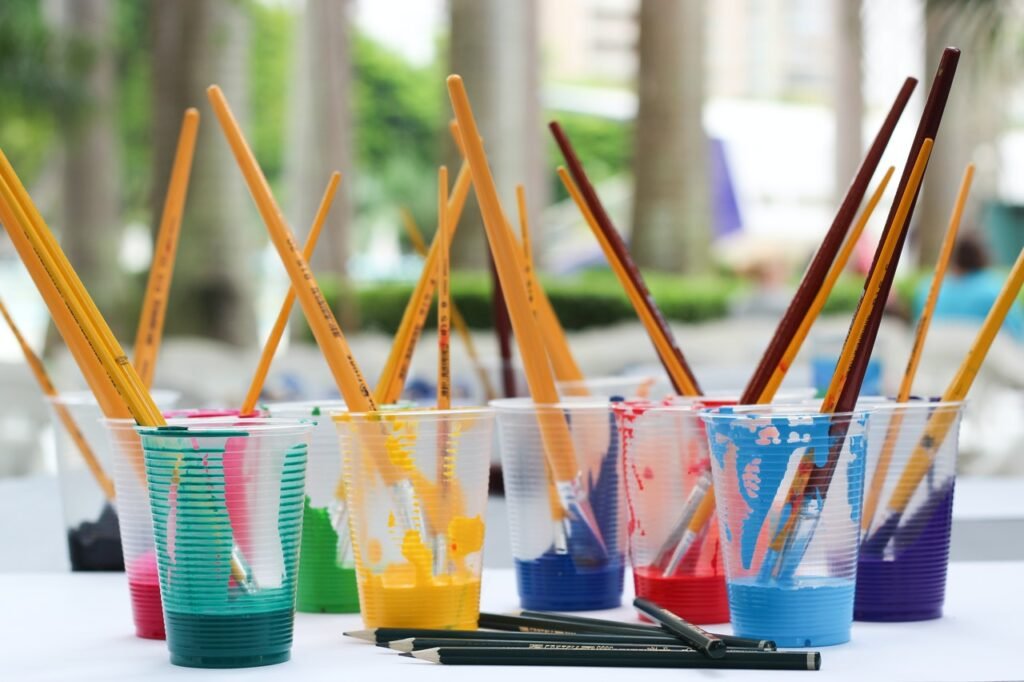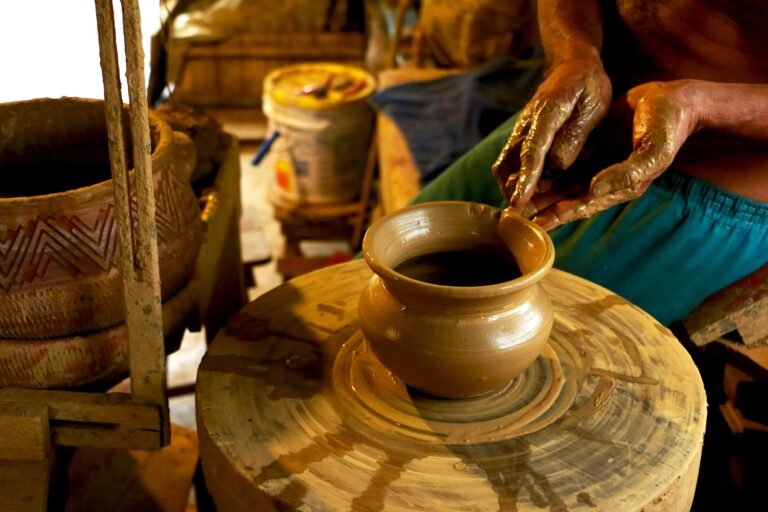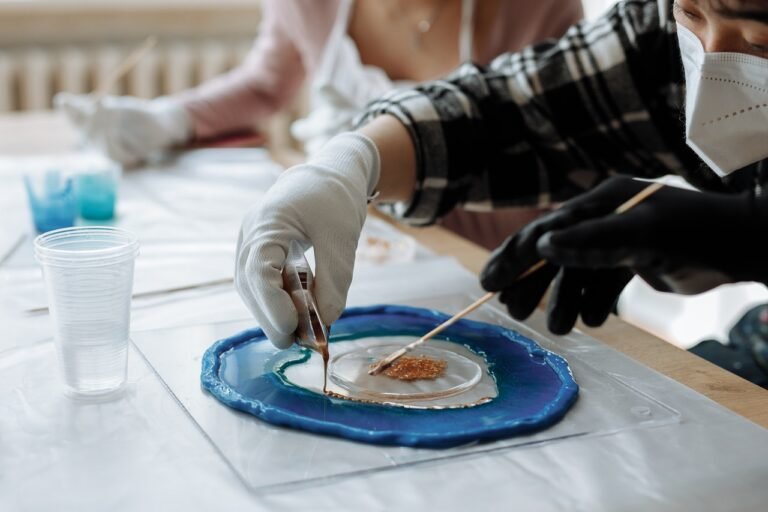How To Paint Polymer Clay? Easy Guide!
Polymer clay is a versatile and popular medium that suits beginners and professionals alike. It is a type of hardenable modeling clay. It is composed of polymer polyvinyl chloride (PVC), which does not contain any clay mineral. What should I do to color polymer clay?
Color the clay with alcohol-based colors, powdered pigments, fabric dyes, or crayon shavings to avoid leaving water inside. By doing so, you will prevent water bubbles from forming. Acrylic paints based on water are also possible, but you must allow the water to evaporate before baking.
- Polymer Clay – How Do You Color It?
- Which Kind Of Paint Are You Using On Polymer Clay?
- Is Watercolor Good For My Polymer Clay?
- What Is The Best Way To Color Clay?
- Should You Color Polymer Clay Before Or After Baking?
- How Can You Seal The Clay After Painting?
- How Can I Mix Two Colors Of Clay?
- Can I Glaze Polymer Clay?
Polymer Clay – How Do You Color It?
Make sure you use the right tools and the correct painting method. Let the clay cool, sand it or rub it gently with rubbing alcohol. Paint it before baking and create a texture with paint. After baking, seal the product to protect it and give it an antique feel.
Learn how to use acrylic colors on polymer clay while comparing it with some other coloring techniques in this video.
Powders have better control over their opacity than liquids. This allows you to experiment with different colors by mixing powders together. With crayon shavings or soft pastels, you can make powdered pigments of your own.
Knead your clay with color powder and add more if you need to get an opaque look. Soft pastels are easier to turn into powder form and create impressive hues. You can mix shaved pastels or crayons with rubbing alcohol to form a color.
Best Practice For A Proper Coloration
Apply a small amount of ink to the clay and knead it into the color, spreading it evenly throughout. Keep repeating this process and adding a few more drops until you find the right shade.
Start with 5-6 drops of ink, increasing as you get closer to the level of opacity you need. When you have the shape you want, let it air dry for a few hours.
Which Kind Of Paint Are You Using On Polymer Clay?
Acrylic paint is the simplest paint to apply to polymer clay. It is water-soluble, easy to use, and offers a smooth finish. Using alcohol-based colors makes it easy to avoid bubbles. Moreover, they can retain their opacity even after baking the clay.
By adding a few drops of fabric dye to rubbing alcohol, it’s possible to make alcohol inks at home.
Mica, chalk pastels, and powdered pigments are all suitable because they do not cause trapped moisture within the raw clay.
Unlike acrylics, oil paints take longer to dry. In that case, you should not use varnish, wax, or any other compound to seal them. Using oil paints, you can add details to your clay work or color large areas of cured clay.

Is Watercolor Good For My Polymer Clay?
Watercolors are tricky to handle with polymer clay since they rely on the water spreading evenly over the surface. You can, however, use it to perform specific techniques on raw and baked polymer clays if you meet certain conditions. Read this article for more details.
Can You Color Polymer Clay With Food Coloring?
Food coloring contains added water and sugar. As the clay bakes, they can inhibit the chemical process of hardening. Sometimes you might see bubbles on the surface due to the water. You can get rid of the water, but the sugar will still remain, creating problems for you.
What Is The Best Way To Color Clay?
You have to add a stain or oxide that comes in powdered form to the clay. Adding them either in an aqueous form by making a paste or slip, or as a powder, is possible.
Adding a dry stain to your clay or mixing it with a wet stain, or making a colored slip and mixing it with your clay are some ways to color your clay.
Should You Color Polymer Clay Before Or After Baking?
Since it does not shrink or expand when it cures, you can paint before baking. Conversely, unbaked clay can form a better bond with paint as it cures.
You can use acrylic paint before baking the polymer clay. If you plan to use it after baking the clay, you will have to sand and seal the painted surface in order to provide better protection.
How Can You Seal The Clay After Painting?
Create a seal using varnish, acrylic sealer, wax, or liquid epoxy. Make a thin layer of acrylic sealer spray on it to prevent scratches and harmful weather conditions.
In the event that you want to paint after baking, only seal the polymer clay since it becomes water-resistant when baked and cured.
How Can I Mix Two Colors Of Clay?
To build your palette of colors, begin with the basic blends. In your hand, roll two colors together in the right proportions. Fold the roll in half and flatten it, then roll it again.
Watch this video to see how to get a gradient color mix. Learn more about mixing colors with polymer clay in this video. Make your own mixes for creating miniature figures and many other items.
Can I Glaze Polymer Clay?
After baking, you can make it slightly shiny by using a water-based polyurethane glaze. In the jewelry-making process, glazing is useful. Glazing adds a thin layer of protection to clay against UV yellowing caused by sun exposure.
How Will You Apply Acrylic Paint To Polymer Clay?
If your polymer clay appears rough or doesn’t bake properly, smooth the surface using the clay tools you have. Ensure there is no residual dust on the surface and that the table is free of spills and splatters.
You can dilute the acrylic paint or you can start with a thin layer. Clean the surface after applying a coat of paint by wiping away any blemishes. Give the first coat light sand after drying before applying another.
What Are The Other Attributes Of Polymer Clay?
It is a man-made clay that includes resin, possible colorant, filler, and polymers. You can bake it in your home oven where a kiln is unnecessary.






